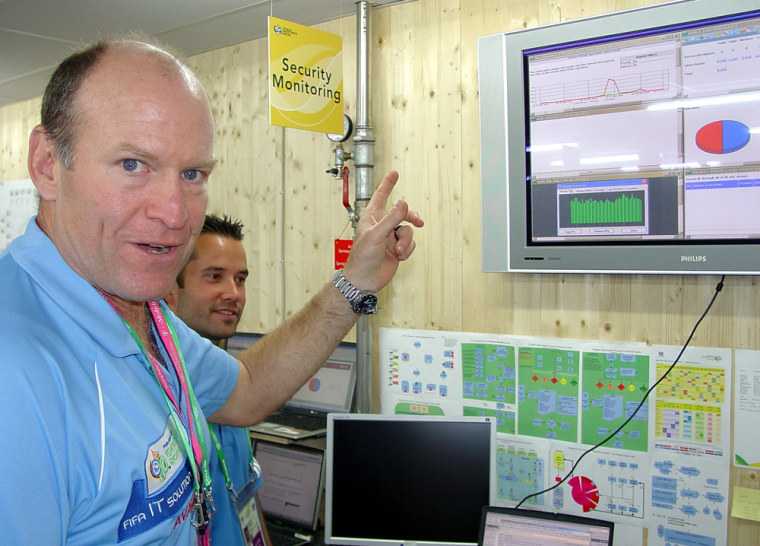Tom Porter and Doug Gardner intensely watch the green numbers scrolling quickly down a 42-inch plasma monitor, making sure information flowing over the World Cup's computer networks moves as smoothly as Brazil's offense.
They are part of a team whose efforts, if successful, won't be noticed by the millions of fans watching the monthlong tournament on television or visiting its Web site for game updates.
They are part of the team that Avaya Inc., a Lucent Technologies Inc. spinoff, has deployed to keep the World Cup linked across Germany so that information such as travel schedules and the latest red cards can be immediately gathered, filed and sent out to commentators, coaches, reporters and FIFA's World Cup Web site.
But it is more than just real-time statistics — the network operation center also ensures that team buses are coordinated for games, hotels are booked for players, and officials — from upper level executives to the thousands of volunteers — are properly credentialed.
"From a network operations point of view, it's gone very well," Gardner said during a visit to the hub, which is based in the sprawling Munich convention center. "The main problem was power fluctuations and power outages in the stadiums, but we've gotten on top of all those and we have not had to replace anything."
It's a familiar situation for Gardner, who oversaw the running of the operations center in 2002 when the World Cup was played in Japan and South Korea.
At the International Broadcast Center's IT command center there are four plasma screens that provide real-time analysis of the systems and monitor the security of the hundreds of miles of cables, switches and routers as well as multiple PCs, laptops and an array of phones — cellular and wired.
The center is open daily from 7 a.m. until an hour after each day's last game, when it switches to its parallel site in Texas so the tech team can rest.
Constant vigilance is needed to guard against network intrusions from the outside and the threat of viruses being mistakenly introduced on the inside by staffers and journalists who are plugging their own laptops in the network.
"We have stopped a number of viruses before they got into the network," said Porter, who has spent more than 10 years in the networking and security industry as a consultant and security software developer. "To our knowledge, there haven't been any (active attacks) against us."
Not for a lack of a trying. During an interview with The Associated Press, a computer user in China tried repeatedly to scan the network for a weak spot, all the while Porter and his staff monitored the would-be intruder, poised to act if needed.
The day the 2002 World Cup started, hackers tried to overload the system and bring it down — with some 1.5 million probes over two hours. It was stopped and there was no delay, but it was a good lesson for the techies four years later.
Porter said Avaya is using a mix of automated tools and software and a staff of 257 people to keep tabs on everything. The company has worked with Deutsche Telekom AG for nearly two years to ensure the German firm's infrastructure would fit with its own systems.
With an estimated 45,000 network connections, 30,000 network devices and over 15 terabytes of data, it is the largest converged communication network ever built for a sporting event.
"We're always actively monitoring the network," Porter said. "It's akin to securing a bank on the back of a truck — it's always moving, it's a very dynamic environment."
Another tool is the Converged Network Analyzer, or CNA, which focuses on the performance of the various applications, such as those for accreditation and ticketing, while the data they generate cross the network.
The CNA measures all available paths over the network and decides the best path needed for the application.
If it shows a slowdown on the network, it can determine the cause, such as a virus, as well as figure out how best to reroute traffic around network congestion.
As the World Cup moves from the first round to the next, and onward to the July 9 final, the infrastructure at stadiums that won't be used anymore will be dismantled, Gardner said. When the tournament has ended, the company plans a detailed analysis of what went right and what went wrong.
In the end, it will prove to be good advertising for Avaya. Already, several customers and potential customers have been brought in to see the network, which could boost sales and contracts for the company.
But for now, the priority is to keep the network securely running.
"I don't want to be in the position that IBM were in Atlanta in 1996 when they had trouble with their network," Gardner said, referring to when the company's systems produced late, and sometimes wrong, information to reporters and to Web sites. "It's still talked about."
